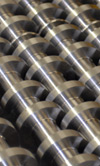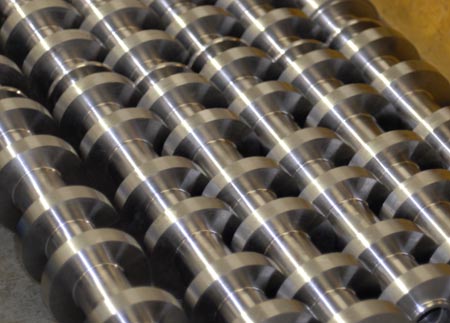What makes a good cam?
 As a car/engine buff first and an engineer second, I'm always interested in the views (however misguided) of my fellow enthusiasts. So when it comes to the question of what makes a good camshaft, their thoughts can be revealing.
As a car/engine buff first and an engineer second, I'm always interested in the views (however misguided) of my fellow enthusiasts. So when it comes to the question of what makes a good camshaft, their thoughts can be revealing.
To one individual, a weekend racer of some skill, the perfect cam is one that gives ultimate top-end power with maximum torque only a couple of thousand revs lower. Using his ultra-close ratio gearbox and slick, flappy-paddle gear change system, swapping places between peak torque and maximum power, he could lap all day to his heart's content - absolute bliss!
Another individual, a slightly more laid back character, more used to threading his vehicle up the narrow confines of a hillclimb track, disagrees. Gear changes waste time, and any time when the engine throttle is not at its maximum for the track conditions has to be avoided. To him therefore, the perfect cam is one that gives good low-speed torque with the minimum of gear changing, making the car quite docile really and easy to drive. Such a car enables him to concentrate more on the important things like the perfect line or the optimum braking point.
A third person towards the back of the group steps forward, both hands stuffed into his somewhat grimy overall pockets and says he's inclined to disagree with the first two. "No, to me," he says, "the perfect cam is one that is perfectly straight, spinning easily in its bearings, has no greater than 0.001 in variation of lift between its lobes and has a lobe centre angle variation [the angle between two cam lobes] of less than 0.25º peak to peak. Furthermore, a cam that has any measurable run-out with a dial gauge or that exceeds any of these numbers should be viewed as scrap." And even though I count myself an enthusiast before and engineer, I would confidently support this view.
But of course the best of cams, while conforming to the above specifications, are those where the evidence of the manufacturing process cannot be seen - the stress relieving process, for instance. For cams that spin very quickly (as opposed to those that rotate slowly and are heavily loaded), steel to EN40B specification is an excellent choice. A nitriding steel, after rough machining the component should be stress relieved before the nitriding process and subsequent final grind.

Unfortunately some cam manufacturers, to save money, might opt to forgo the stress relieving process and, unsurprisingly, after nitriding the cam might distort. Attempting to straighten the shaft could generate a weakness, while re-machining can break through the thin nitrided layer. Either way, the cam is destined for a shorter life. The best steel cams therefore are those that have been stress relieved before the nitriding process and are, as it says in an advertisement, "reassuringly expensive".
So in a way, although all three of my fellow enthusiasts were correct, a good cam is one that has been not only accurately machined but stress relieved as well.
Fig. 1 - Cam blanks
Written by John Coxon